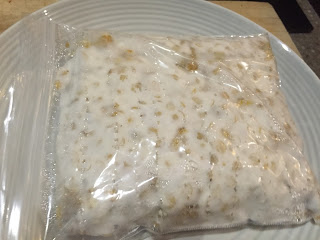Kombucha
 |
| Kombucha with Raspberries |
Kombucha (also known as KT for Kombucha Tea) originated in China, although some sources claim that it is originally from Russia.
Health Benefits of Kombucha:
- Traditional longevity tonic
- Miracle elixir
- Alleviates arthritis, rheumatism, and gout symptoms
- Possibly reduced blood pressure
- Regulates appetite
- Reduces sugar cravings in some people
- Has an antimicrobial effect on bacteria, yeasts, and viruses
- Improves skin, hair, and nails
- Reduces stress, nervousness, and insomnia
- Stimulates digestion
- Normalizes bowel movements
- Supports intestinal flora
- Been shown to relieve or cure hemorrhoids
When Not to Drink Kombucha:
If you are taking medications, are an alcoholic, diabetic, alcohol sensitive, caffeine sensitive, sugar sensitive or have Candida, kombucha may not be the drink for you.
Ingredients for a small batch brew:
 |
| SCOBY |
- fresh SCOBY (Symbiotic Culture of Bacteria and Yeast)
- 1-2 cups of mature kombucha tea starter
- 1 gallon (just under 4 litres) of chlorine-free water
- 1 cup sugar
- 1 tablespoon black, green, or red tea
Step by Step:
- Heat 1 quart (approx. 1 litre) water to just below boiling. Add in tea. Note that if you are adding hot water directly to your brewing vessel, make certain it is not cold to avoid cracking. Let the tea steep for 5-15 minutes and then remove tea leaves. The best types of teas for kombucha are black, oolong, green, white and pe-erh which all come form the same plant, camellia sinensis. You want to use organic and fair-trade teas as they avoid toxic pesticides and oils.
- Add sugar to hot tea and stir the contents until fully dissolved. Evaporated Cane Juice (also known as raw sugar) is my choice for brewing Kombucha. The sugar is processed enough for the kombucha microorganisms to consume it easily but also retain its vitamins & minerals such as calcium, magnesium, potassium and iron. Plain white sugar is the classic choice as it puts the komucha microorganisms into overdrive as it is a highly refined fuel source. Being in the nutrition field, I sometimes ask myself what is in it and what chemicals were used in its refining process. Warning: Do not use raw honey as its native bacteria will compete with the kombucha microorganisms. If you are interested in using honey, you will want to brew the mysterious Jun. Stay tuned for an article on the differences between Kombucha & Jun!
- Pour the remaining 3 quarts (approx. 3 litres) of cool water into brewing vessel along with the brewed tea. With a clean finger, dip your finger into the tea to gauge whether it is body temperature (38 C). Note that you do not want to place the SCOBY into hot water or it will die.
- With clean hands, carefully place the SCOBY in the sweetened tea. Pour the starter liquid on top of the SCOBY. Note that this will acidify the pH of the mixture near the top where the SCOBY is.
Freshly mixed ~ note the darker colour - Cover the vessel with a clean, breathable cloth secured with a string or rubber band. Set in a warm location (ideally 24-29 C) and keep it out of direct sunlight.
Covered & Aging - Allow the sweet tea mixture to ferement for 7 to 21 days. After approx. 5 days, you can start tasting it each day to discover your preferences. The best way to taste your brew and not introduce any pathogens is by carefully inserting a straw beside the SCOBY and taking a sip.
- Once your brew ages to your preference, it is ready to harvest. Before you do anything, make sure to collect at least 1 cup for the next brew from the top portion. If you have an aged brew, one cup should be fine and if you have a young brew, you may want to be safe and collect 2 cups. Then you take the SCOBY out and put it into a bowl and cover. This is done not to disturb the yeast at the bottom which is fine for drinking but you don't want it for your mature starter liquid.
Colour after aging - What remains is yours to consume either straight from the vessel or flavour in a secondary ferment. Flavouring kombucha is probably the most creative part of this entire process! Fresh herbs, fresh fruit and ginger are some common flavouring choices. Depending on the amount of sugar, it will reactivate the yeast and will cause carbonation in most cases.
- I personally like to do my secondary ferments in mason jars so I can take the fruit out prior to bottling. Plus, my family knows what is ready and what is not! Once you have flavoured your kombucha tea, you may then leave it at room temperature for 1-4 days to build carbonation and more flavour.
Secondary ferementation in mason jars - After the secondary ferment, bottle into EZ cap bottles and put in the fridge. Don't forget to enjoy your homemade booch!
Cheers!
Progress:
28.07.2016: Fresh brew and left on vacation08.08.2016: Came back from vacation to find my finished brew & harvest time!
Update: I have not been good with documenting my progress with all my batches of kombucha. All summer I have prepared my batches around my trips. My flavours have been very different from batch to batch all summer. I plan to do a time lapse and tasting each day for you to watch the SCOBY form! More updates to come soon.....


















































